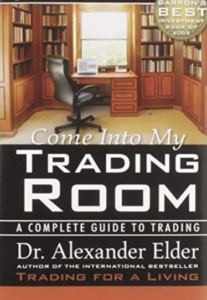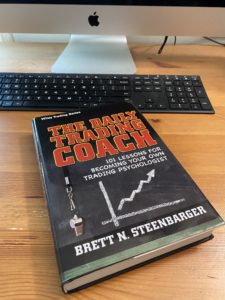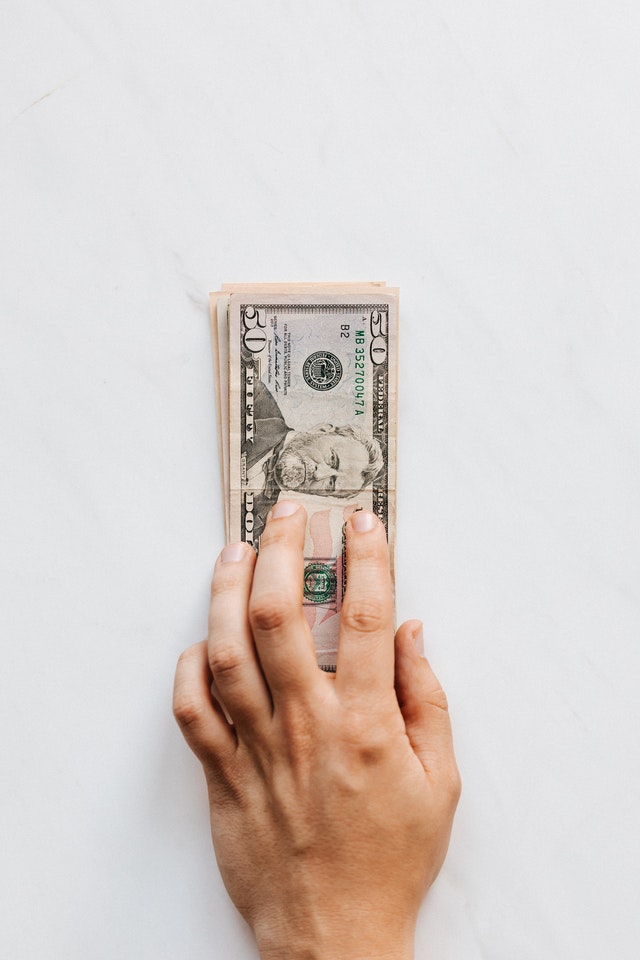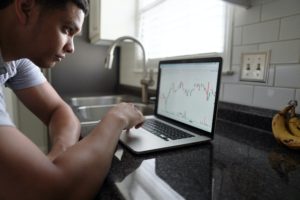I wonder how you’re feeling as you dive deeper and deeper down this rabbit hole of day trading for profit.
You may be feeling anxious, disappointed that you’re not where you thought you’d be by now, perhaps overwhelmed by all the information that’s out there, or maybe just eager and thirsty for knowledge that can help you focus on what you need to do to achieve your goals.
I want to share with you some resources that can help appease all of these feelings and leave you with a more structured conception of what it takes to become a profitable trader.
–But first – If you don’t know my story, I’m a Ph.D. student in the field of business and entrepreneurship, and I first taught myself how to day trade after developing a chronic illness and needing to look for ways to make money from home. After two years of lots of failure, persistence, and reflection on what I was doing, I was able to achieve profitability with day trading Forex. So a big part of what helped me break gravity and get into a streak of profitability involved consuming a ton of content on day trading and performance mindset.
Now, while I definitely learned a lot from YouTube, a big portion of what actually helped me to organize my own trading system and strategies involved reading copious books on these subjects. I believe that reading books helped me understand trading in a structured way and watching youtube was useful for filling any holes in that education and also finding inspiration in others’ stories of success.
So today, I’m going to share with you three of the most powerful and enlightening books about how to day trade, be it with Forex, Stocks, or Crypto – and become profitable by creating your own system and honing your discipline.
What all of these books have in common is that they’re written for beginners, they’re very well structured by breaking each component down into bite-sized bits, and tend to be all-encompassing in their discussion of what makes for profitability.
I’m also going to share with you a bonus book that has been the greatest catalyst in not only my trading progress but other roles in my life, such as pursuing a Ph.D. and starting a business, so be sure to stick around to the end to find out more.
Alright, let’s dive in!
3 BEST Beginner Books on Day Trading
1) “Come Into My Trading Room” – Alexander Elder
The first book on this list is actually the first book I ever read about day trading.
At the time, I was looking to learn to day trade stocks, but I managed to find some good books that outline a generalize d approach to trading any market, including Forex. So Alexander Elder’s “Come Into My Trading Room,” was the best possible resource for my virgin day trader brain to become intimate with and develop an idea of what a well-structured routine and system could look like.
d approach to trading any market, including Forex. So Alexander Elder’s “Come Into My Trading Room,” was the best possible resource for my virgin day trader brain to become intimate with and develop an idea of what a well-structured routine and system could look like.
In this book, Elder talks about the 3 crucial elements of day trading success which involve what he calls the 3 M’s: Mind. Method, and Money Management.
Notice that Elder first discusses your trading mindset before even talking about strategies and risk management. Elder and I both encourage you to take your trading psychology and discipline very seriously and treat this aspect of your trading with the same level of interest and study as you would technical analysis or building a strategy.
In this book, he also talks about practical elements of trading, such as selecting the right equipment, how to keep a trading journal and equity log, and matters of position sizing and technical analysis. This book was such a boon to creating a map in my mind as to what I needed to do to get started and create an organized system to a trading routine and learning how to develop my own discipline.
2) “High Probability Trading” – Marcel Link
The second book on this list is similar to the first, as it’s also a general guide to trading, but spends more time focusing on basic technical analysis and important components of a strategy, such as determining entry and exits.
“High Probability Trading” by Marcel Link is a fantastic read if you want to learn more about technical analysis without getting overwhelmed, as many other traditional recommendations for books on technical analysis tend to be very dense and written in somewhat droll language.
He also explains what makes for high probability trades, such as with having a good reason for the trade when you see a confluence of positive signals and being able to identify what are bad reasons for a trade, such as with feeding an impulsive desire to jump in on a fast movement in the market. Like Elder, he also talks about the crucial components of trading with discipline, keeping an organized trading routine, and how to manage your funds.
3) “The Daily Trading Coach” – Brett N. Steenbarger
The third book on this list is specifically about trading psychology. “The Daily Trading Coach” by Brett N. Steenbarger is a useful resource that can be read like a day-by-day book since it’s broken down into 101 lessons about developing your discipline and managing your emotions.
I read this by reading two lessons a day, and it was incredibly useful for developing a better awareness of what I was doing that was causing so much failure and how I could turn that around by implementing specific habits and exercises to locate and correct the bad behavior.
![]()
 So these three books are a great place to start if you’re looking to either begin your day trading career or finally achieve some of your long-standing trading goals. I can’t emphasize enough that reading is a trading edge if you can make it a habit. You’re going to find much more thoughtful and well-structured advice from a book than a mishmash of youtube videos you find online.
So these three books are a great place to start if you’re looking to either begin your day trading career or finally achieve some of your long-standing trading goals. I can’t emphasize enough that reading is a trading edge if you can make it a habit. You’re going to find much more thoughtful and well-structured advice from a book than a mishmash of youtube videos you find online.
Trust me, regularly reading a book on day trading is a necessary part of your trading education and long-term success. If you’d like a list of trading books I recommend every day trader to read in order to get profitable and build the life of your dreams, be sure to download my FREE list of study resources!
Now, before we go, I want to mention one more book that gets ~a little meta~ and can help you think about how structuring your trading system is part of a bigger plan for your overall life goals and success.
BONUS: High Performance Habits – Brendon Burchard
The book “High Performance Habits” by Brendon Burchard is probably the most high-leveraging book I’ve ever read and re-read time and again.
When I read this book and implement its advice and exercises, my entire life improves for the better, including my trading progress. Burchard talks about habits involved with six key areas of clarity, energy, productivity, necessity, influence, and courage, which combined make for a life that is effective, efficient, and meaningful.
I imagine day trading for you isn’t the end goal. There are powerful things you want to do with the discipline and confidence you develop, as well as the money you make. Reading the “High Performance Habits” can help you discover what that looks like and how to use your trading to get to a new level.
So I hope you found value in this lesson – please let me know by commenting below if there’s anything you’d like to learn more about these books and what I’ve learned by reading them. I hope you all have a successful trading week ahead, and I wish the best of strength and luck. Take care!





Latest posts